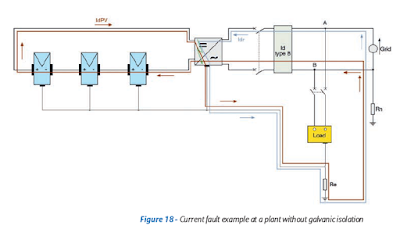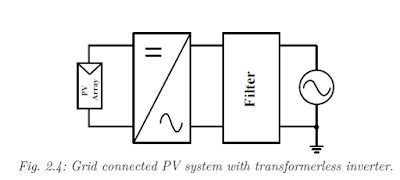sexta-feira, 11 de outubro de 2019
terça-feira, 8 de outubro de 2019
Webinar: Universities of Applied Sciences Date: 10 Oct 2019 - 10 Oct 2019 Organizer: German Academic Exchange Service (DAAD) Location: Online
Join our webinar "Universities of Applied Sciences" and chat with representatives to find out about career paths and opportunities for international scientists.
Event details: "Research in Germany“-Webinar: Universities of Applied Sciences - Career paths and job opportunities Thursday, 10 October 2019,
2:00 pm – 3:00 pm Hosted by: Anne Knab, German Academic Exchange Service (DAAD) Panelists: Prof. Dr. rer. nat. Anant Patel, University of Applied Sciences Bielefeld Dr. Katja Simons, Campus OWL Dr. rer. nat. Dzemal Elezagic, University of Cologne/M.Sc.University of Applied Sciences Bonn-Rhein-Sieg
The event is open to anyone interested in doing research in Germany. It is free of charge and will be conducted in English. Webinar: Universities of Applied Sciences Date: 10 Oct 2019 - 10 Oct 2019 Organizer: German Academic Exchange Service (DAAD) Location: Online
►►► Clich here to register!
No registration deadline: Registration is possible up until the end of the webinar.
LINK ORIGINAL:
https://www.research-in-germany.org/events/rig-events/2019-10-10_Webinar__Universities_of_Applied_Sciences
Event details: "Research in Germany“-Webinar: Universities of Applied Sciences - Career paths and job opportunities Thursday, 10 October 2019,
2:00 pm – 3:00 pm Hosted by: Anne Knab, German Academic Exchange Service (DAAD) Panelists: Prof. Dr. rer. nat. Anant Patel, University of Applied Sciences Bielefeld Dr. Katja Simons, Campus OWL Dr. rer. nat. Dzemal Elezagic, University of Cologne/M.Sc.University of Applied Sciences Bonn-Rhein-Sieg
The event is open to anyone interested in doing research in Germany. It is free of charge and will be conducted in English. Webinar: Universities of Applied Sciences Date: 10 Oct 2019 - 10 Oct 2019 Organizer: German Academic Exchange Service (DAAD) Location: Online
►►► Clich here to register!
No registration deadline: Registration is possible up until the end of the webinar.
LINK ORIGINAL:
https://www.research-in-germany.org/events/rig-events/2019-10-10_Webinar__Universities_of_Applied_Sciences
domingo, 6 de outubro de 2019
Analysis and Modeling of Transformerless Photovoltaic Inverter Systems Kerekes, Tamas Faculty of Engineering, Science & Medicine at Aalborg University DENMARK
Analysis and Modeling of Transformerless Photovoltaic Inverter Systems Kerekes, Tamas Faculty of Engineering, Science & Medicine at Aalborg University DENMARK
Dissertation submitted to the Faculty of Engineering, Science & Medicine at Aalborg University in partial fulfillment of the require-ments for the degree of Doctor of Philosophy in Electrical Engineering
Preface
This thesis is written in the frame of two research projects: the first, entitled “Transformerlose solcelle invertere”, was financially supported by the Eltra PSO-F&U contract nr. 5780 signed between Aalborg University and Energinet in cooperation with Powerlynx A/S, now Danfoss Solar A/S. The second part of the research, entitled “Electrical energy conversion and condition-ECON2”, was supported by the EU framework entitled “Marie Curie Host Fellowships for Early Stage Researcher Train-ing”, financially supported by the EC Contract MEST-CT-2004-504243. Acknowledgements are given to Aalborg University and the above mentioned institu-tions for their financial support. The research was carried out under the supervision of Professor Remus Teodores-cu from Institute of Energy Technology (IET) at Aalborg University. My deepest gratitude goes to my supervisor for his guidance and professional support during the elaboration of the work done in this thesis. I would like to express my sincere thanks to Dr. Christian Klumpner and Dr. Mark Sumner for their guidance and support during my one-year stay at Nottingham University. I’m also grateful to Dr. Marco Liserre from Politecnico di Bari for his kindness and professional guidance during my six month stay at the Dipartimento di Elettrotecnica ed Elettronica. I would also like to thank Uffe Borup, from Danfoss Solar A/S, for participating in the steering meetings and for his active support. I want to thank to all my colleagues from Institute of Energy Technology for their friendly companionship which guided me through life at Aalborg University. Special thanks go to Dr. Pedro Rodriguez and Professor Vassilios Agelidis for their un-selfish help and moral support, during their stay at IET. Also many thanks to all my fellow PhD students, who assisted me many times and gave me support in different ways. In particular, I thank to Dezső Séra, Mihai Ciobotaru and Máthé László for their friendly help and encouragement. I would also like to thank Gerardo Vazquez from Universitat Politecnica de Catalonya for sharing his experience and time with me during his visit at IET. And, last but not least, I want to express my deepest gratitude to my wife Erzsébet Kerekes and to my entire family in Romania for the substantial and conti-nuous support which I have received during the elaboration and finalization of this work. Tamás Kerekes August 2009; Aalborg
LINK:https://vbn.aau.dk/ws/portalfiles/portal/123201790/tamas_kerekes_no_publications.pdf
Analysis of Leakage Current Elimination in Single Phase Transformerless Inverter for Grid-Tied Photovoltaic Applications Indira , Venmathi Mahendran Research Scholar, Dept of EEE, Associate Professor, Dept of EEE St.Joseph’s College of Engineering, Chennai, Tamilnadu, India
Transformerless Inverter for Grid-Tied Photovoltaic Applications Indira D1, Venmathi Mahendran2 1Research Scholar, Dept of EEE, 2Associate Professor, Dept of EEE St.Joseph’s College of Engineering, Chennai, Tamilnadu, India.
Abstract:
In photovoltaic (PV) application, it is possible to remove the transformer from the PV system in order to reduce size, losses, and cost and improve the efficiency. Due to the characteristics of low cost and high efficiency, the transformerless PV gridconnected inverters have been popularized in the application of solar electric generation system in residential market. Unfortunately, presence of the parasitic capacitor between the panel’s metal frame and cells causes the leakage current issue. The leakage current increases current harmonics injected into the utility grid, the radiated, conducted EMI, and losses. Eliminating the leakage current is one of the most important issues for transformerless single-phase photovoltaic (PV) systems. This paper focuses on analysis of leakage current elimination in single-phase transformerless inverter for PV applications. A simple unipolar Sinusoidal Pulse-Width Modulation (SPWM) technique is used to modulate the inverter to minimize the switching loss, output current ripple, and the filter requirements.The main benefits of the proposed inverter are (1) The neutral of the grid is directly connected to the negative terminal of the PV panel, so the leakage current is eliminated, (2) low cost, (3) its compact size, (4) flexible grounding configuration, (5) capability of reactive power flow, and (6) high efficiency. A complete description of the operating principle and analysis of the proposed inverter are presented and simulation results are verified.
Keywords— Charge Pump Circuit, Grid Connected Inverter, Leakage Current Elimination, Photovoltaic, Transformerless Inverter, common mode voltage, parasitic capacitor, sinusoidal pulse width modulation, SPWM.
LINK
http://oaji.net/articles/2017/1992-1537360621.pdf
sexta-feira, 4 de outubro de 2019
Designing a Solar PV System to Power a SinglePhase Distribution System Ana Guerra Vega University of Arkansas, Fayetteville
Designing a Solar PV System to Power a SinglePhase Distribution System Ana Guerra Vega University of Arkansas, Fayetteville
A thesis submitted to the Honors College in partial fulfillment of the requirements for the degree of Honors Bachelor of Science in Electrical Engineering
ABSTRACT
Over the last decade, the costs of PV system components have dropped more than 70%. Additionally, green energy incentives like the 30% tax credit have been pushed forward. PV solar systems have become accessible to the general public. Companies are pledging to reduce their carbon emissions. As part of their green initiative, the City of Fayetteville has requested a feasibility study for a PV system to be installed on the rooftop of the Facilities Management building, 115 S. Church Ave, Fayetteville, AR, 72701. This thesis shows the design process of this PV system and the return on investment estimation. While the system would not be expected to generate large revenue, for the purpose of carbon emission reduction it is feasible.
FULL TEXT VIEW
https://scholarworks.uark.edu/cgi/viewcontent.cgi?article=1068&context=eleguht
Assinar:
Postagens (Atom)
















































 JOSIL ARTISTA PLASTICO FORTALEZA CEARA BRASIL AV.HERACLITO GRAÇA 41 TEL(85)32542378
JOSIL ARTISTA PLASTICO FORTALEZA CEARA BRASIL AV.HERACLITO GRAÇA 41 TEL(85)32542378
















